


The letterhead of this 1892 receipt bears the Leggett & Leidy Combination Spring Bed Company name. Apparently, Leggett and Platt were conscious of the costs of waste, as a close look reveals that “Leidy” was crossed out and “Platt” written underneath. An ample supply of old letterhead must have been available, since the partnership between J.P. Leggett and C.B. Platt was established in 1885 and Martin Leidy had left the company years earlier.
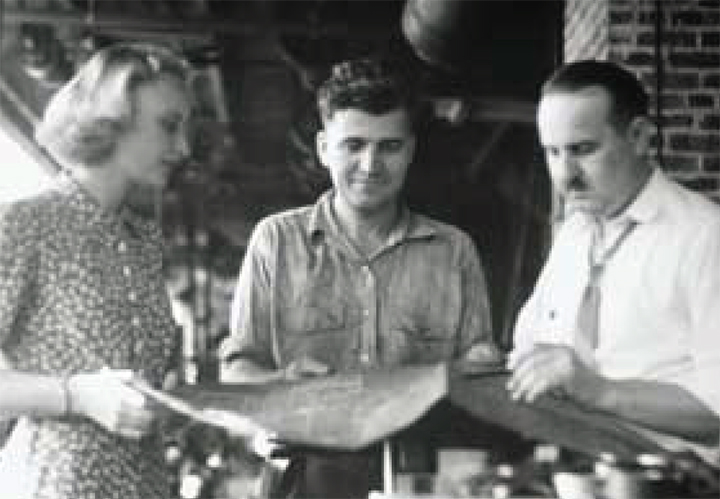
Harry M. Cornell, Sr. (far right) discusses business with engineer Carl Kirchner and another unidentified Leggett & Platt employee. Cornell joined L&P’s board of directors in 1934 and became vice president and sales manager in 1935.
Since the early years, our factory lines have featured a vast array of assembly machines — many of which were designed, patented, and built by Leggett & Platt employees.
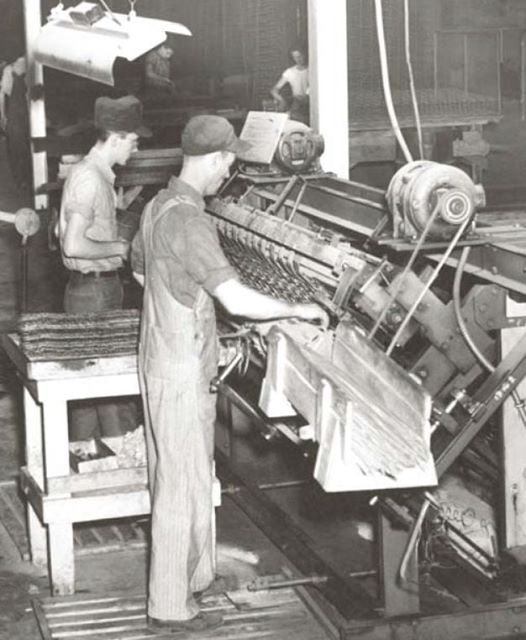
The approval of J.P. Leggett’s 1885 bedspring design by the U.S. Patent and Trademark Office was one of the many spring-related creations that served as a foundation for our company.
While he excelled in his knowledge of bedsprings, his inventive mind was not confined to this topic. During his lifetime, Leggett also patented other unique ideas, including an “Endless Necktie”, “Target Trap” for throwing clay pigeons, “Lid for Tea Kettles” and his “Motor Vehicle Transmission System.” (Drawings courtesy of the U.S. Patent and Trademark Office. )



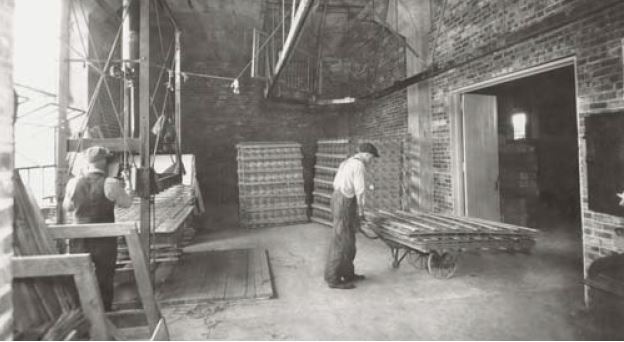 This photo shows a section of the shipping room of the Carthage factory in the early 1930’s. This particular area was devoted to crating innerspring units on the Leggett-designed compressed-air baler. Innerspring units arrived at the crating area from the assemblers via an overhead track and were placed on the crating press (far left) for compression into bundles. The man shown on the right uses a wheelbarrow to deliver crated units to the warehouse.
This photo shows a section of the shipping room of the Carthage factory in the early 1930’s. This particular area was devoted to crating innerspring units on the Leggett-designed compressed-air baler. Innerspring units arrived at the crating area from the assemblers via an overhead track and were placed on the crating press (far left) for compression into bundles. The man shown on the right uses a wheelbarrow to deliver crated units to the warehouse.

For the first 12 years, our founders produced their bedsprings alongside farm equipment at the C.D. Platt Plow Works plant, founded in 1873 by C.B. Platt’s father.
Finally, in 1890, the first Leggett & Platt bedspring factory opened at the corner of Second and Maple Streets in Carthage. Although the first and fourth individuals in this photo (pictured left to right) are unidentified, the rest include Kansas farmer Sam Smith, George D. Leggett, Carthage plumber Karl Speece, J.P. Leggett, and C.B. Platt.
L&P completed construction on our original Dallas factory in the 1930s. This early aerial photo shows the facility located on Oak Lawn Avenue in what is now downtown Dallas. Within the next decade, due primarily to city politics and the increasing value of the property, L&P sold the land and moved its operations 35 miles south to Ennis, Texas.

The original plant in Ennis, Texas (below) produced innersprings, all-wire bedsprings, and some furniture components. By the end of 1948, L&P was already planning the facility’s first expansion.
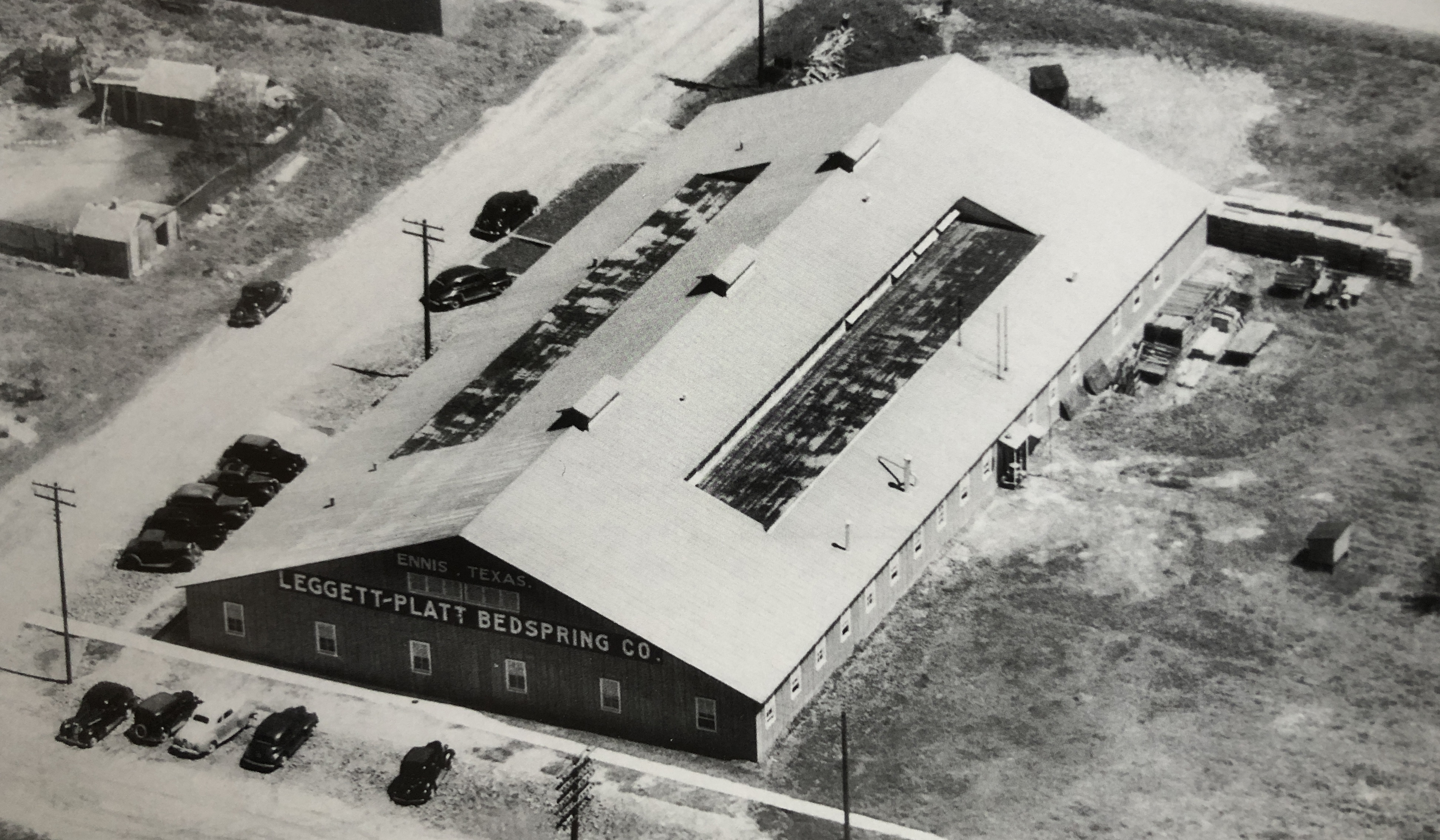
This business-to-business marketing advertisement from the 80’s says it all. Some of the most comfortable chairs start at L&P —even after all these years!

Sleep well and you keep well. Happy Throwback Thursday!
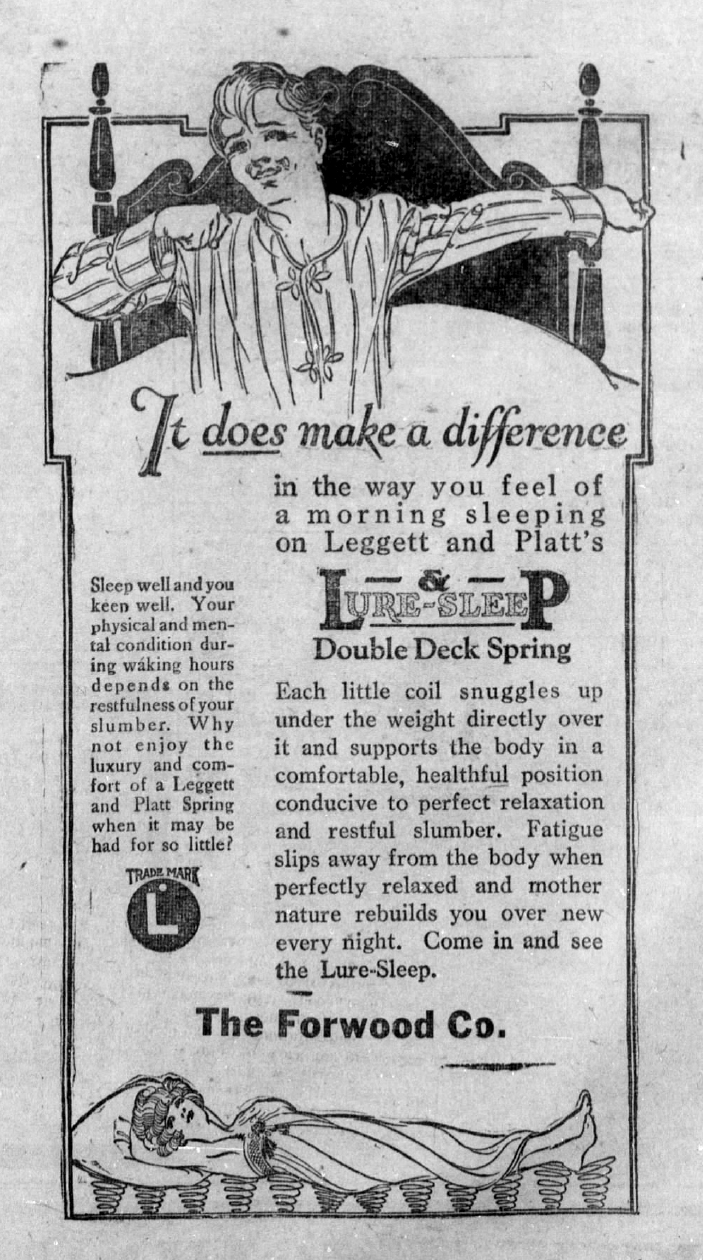
Advertisement from The Taylor Daily Press. September 24, 1923 (Taylor, Texas)